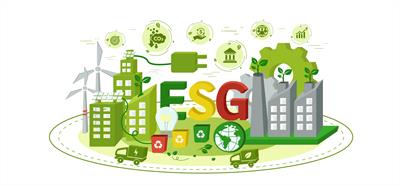Ray daSilva, President of Mobility Exchange, offers some straight-forward advice to help moving companies become more sustainable.

Some of us consider moving, a basic service industry, a few steps removed from corporate and government procurement processes. Except maybe not so removed after-all. With ESG (Environmental, Social and Governance) driving sustainable procurement practices, ESG requirements are increasingly becoming an important part of corporate and government contracts for global relocation and move management companies. Moving companies are now having to face deadlines to meet minimum sustainability guidelines to qualify to do business with certain customers.
In this article, we will consider one trend in particular, environmental sustainability.
What is driving this trend?
The obvious answer is climate change. It is estimated that global carbon dioxide emissions are around 33 billion metric tons per year which can lead to global warming, sea level rise, ocean acidification, loss of glaciers, loss of ice caps and extreme weather events. These in turn may cause impacts on agriculture, health risks and according to some warnings, the viability of our planet to sustain life at all.
Governments and corporations can no longer ignore the warnings and know that they must demonstrate how they are responding to these threats. As is often the case in such situations, there is controversy and disagreement on how effective some of these
responses are. One example is the use of carbon credits.
What are carbon credits?
Let’s start with the concept of personal and corporate accountability for carbon emissions. When we drive our car to work, our car emits carbon. Similarly, moving services providers emit carbon in many ways: trucks, forklifts, our use of air and ocean transport, the energy consumed to produce packing materials. It is a long list.
 While it is theoretically possible to measure these emissions, it may not be practical. This is where carbon emission calculators or carbon footprint calculators come in. These can help to estimate the amount of greenhouse gas emissions that an individual, organisation product, service or activity may produce.
While it is theoretically possible to measure these emissions, it may not be practical. This is where carbon emission calculators or carbon footprint calculators come in. These can help to estimate the amount of greenhouse gas emissions that an individual, organisation product, service or activity may produce.
Now that we can estimate the carbon emissions that an activity like a door-to-door shipment of household goods from New York to Tokyo may produce, what can we do about it? The first step is to review our processes and understand how we might reduce our carbon emissions. For example, recycling packing materials can have an impact.
Other solutions may not be so straightforward like replacing your fleet with electric vehicles. While carbon emissions associated with electric trucks may be significant, it depends on the source of your energy. If it comes from clean, renewable sources like wind, solar or hydropower; the savings are higher than if the electricity is generated from fossil fuels. A truck may easily last 10 to 15 years so a changeover may take time.
So, what do we do while we are implementing longer term, meaningful process changes to reduce our carbon footprint? Enter the carbon credit ...
Photo: Ray daSilva, President of Mobility Exchange.